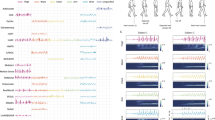Abstract
We are developing a personal activity recognition system that is practical, reliable, and can be incorporated into a variety of health-care related applications ranging from personal fitness to elder care. To make our system appealing and useful, we require it to have the following properties: (i) data only from a single body location needed, and it is not required to be from the same point for every user; (ii) should work out of the box across individuals, with personalization only enhancing its recognition abilities; and (iii) should be effective even with a cost-sensitive subset of the sensors and data features. In this paper, we present an approach to building a system that exhibits these properties and provide evidence based on data for 8 different activities collected from 12 different subjects. Our results indicate that the system has an accuracy rate of approximately 90% while meeting our requirements. We are now developing a fully embedded version of our system based on a cell-phone platform augmented with a Bluetooth-connected sensor board.
Preview
Unable to display preview. Download preview PDF.
Similar content being viewed by others
References
Morris, M., Lundell, J., Dishman, E., Needham, B.: New perspectives on ubiquitous computing from ethnographic study of elders with cognitive decline. In: Dey, A.K., Schmidt, A., McCarthy, J.F. (eds.) UbiComp 2003. LNCS, vol. 2864, pp. 227–242. Springer, Heidelberg (2003)
Lawton, M.P.: Aging and Performance of Home Tasks. Human Factors (1990)
Consolvo, S., Roessler, P., Shelton, B., LaMarcha, A., Schilit, B., Bly, S.: Technology for Care Networks of Elders. In: Proc. IEEE Pervasive Computing Mobile and Ubiquitous Systems: Successful Aging (2004)
Kern, N., Schiele, B., Schmidt, A.: Multi-sensor activity context detection for wearable computing. In: Aarts, E., Collier, R.W., van Loenen, E., de Ruyter, B. (eds.) EUSAI 2003. LNCS, vol. 2875, pp. 220–232. Springer, Heidelberg (2003)
Bao, L., Intille, S.S.: Activity Recognition from User-Annotated Acceleration Data. In: Ferscha, A., Mattern, F. (eds.) PERVASIVE 2004. LNCS, vol. 3001, pp. 1–17. Springer, Heidelberg (2004)
Lukowicz, P., Junker, H., Stäger, M., von Büren, T., Tröster, G.: WearNET: A Distributed Multi-sensor System for Context Aware Wearables. In: Borriello, G., Holmquist, L.E. (eds.) UbiComp 2002. LNCS, vol. 2498, pp. 361–370. Springer, Heidelberg (2002)
Choudhury, T., Lester, J., Kern, N., Borriello, G., Hannaford, B.: A Hybrid Discriminative/Generative Approach for Modeling Human Activities. In: 19th International Joint Conference on Artificial Intelligence (IJCAI), Edinburgh, Scotland (2005)
Park, S., Locher, I., Savvides, A., Srivastava, M., Chen, A., Muntz, R., Yuen, S.: Design of a Wearable Sensor Badge for Smart Kindergarten. In: Proc. 6th International Symposium on Wearable Computers, pp. 231–238 (2002)
Mainwaring, A., Polastre, J., Szewczyk, R., Culler, D., Anderson, J.: Wireless Sensor Networks for Habitat Monitoring. In: Proc. Proceedings of the 1st ACM International Workshop on Wireless Sensor Networks and Applications, pp. 88–97 (2002)
Smailagic, A., Currens, B., Maurer, U., Rowe, A.: eWatch. [Online], available http://flat-earth.ece.cmu.edu/~eWatch/
Rubinstein, Y.D., Hastie, T.: Discriminative vs. informative learning. In: Proceedings of Knowledge Discovery and Data Mining, pp. 49–53 (1997)
Viola, P., Jones, M.: Rapid Object Detection using a Boosted Cascade of Simple Features. In: Proc. Computer Vision and Pattern Recognition (2001)
Schapire, R.E., Freund, Y., Bartlett, P., Lee, W.S.: Boosting the margin: a new explanation for the effectiveness of voting methods. In: Proc., pp. 322–330 (1997)
Oliver, N., Horvitz, E.: Selective Perception Policies for Limiting Computation in Multimodal Systems: A Comparative Analysis. In: Proc. Proceedings of Int. Conf. on Multimodal Interfaces (2003)
Jaakkola, T., Haussler: Exploiting generative models in discriminative classifiers. In: Proc. in Advances in Neural Information Processing Systems (1999)
Zhang, F., Pi-Sunyer, F.X., Boozer, C.N.: Improving Energy Expenditure Estimation for Physical Activity. In: Medicine and Science in Sports and Exercise, pp. 883–889 (2004)
Author information
Authors and Affiliations
Editor information
Editors and Affiliations
Rights and permissions
Copyright information
© 2006 Springer-Verlag Berlin Heidelberg
About this paper
Cite this paper
Lester, J., Choudhury, T., Borriello, G. (2006). A Practical Approach to Recognizing Physical Activities. In: Fishkin, K.P., Schiele, B., Nixon, P., Quigley, A. (eds) Pervasive Computing. Pervasive 2006. Lecture Notes in Computer Science, vol 3968. Springer, Berlin, Heidelberg. https://doi.org/10.1007/11748625_1
Download citation
DOI: https://doi.org/10.1007/11748625_1
Publisher Name: Springer, Berlin, Heidelberg
Print ISBN: 978-3-540-33894-9
Online ISBN: 978-3-540-33895-6
eBook Packages: Computer ScienceComputer Science (R0)




